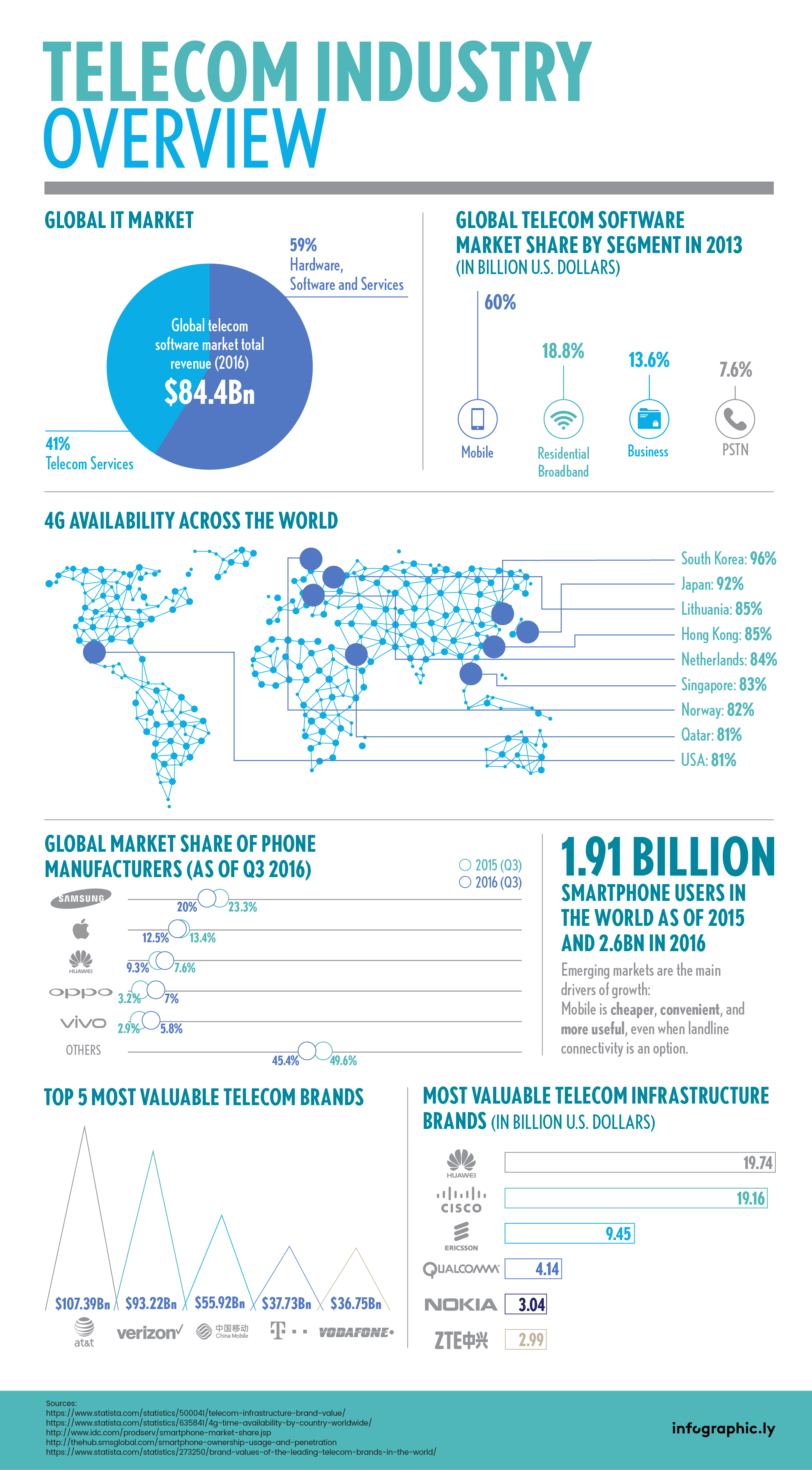[INFOGRAPHIC] Telecom Industry: An Overview
The telecom industry as we know it continues to be at the epicenter of growth as the number of devices that require connectivity is expanding every year. Any disruption in the sector is significant and will affect other industries relying on mobile or related broadband technology (IoT, m-commerce etc…). As mobile becomes more embedded in the tissue of our society, it becomes more and more important for the telecom infrastructure to keep pace with the growing needs.
The telecom industry makes up for $34Bn of the IT industry of which 60% of market share can be attributed to mobile. Today there are 2.6Bn smartphones users, a 26% increase since 2015. The main drivers of that growth are players from emerging markets as mobile is cheaper, faster and more convenient even when landline connectivity is an option (Capgemini, 2015).
Worldwide, South Korea leads the way in terms of 4G availability, users have access to a 4G network about 96 percent of the time (OpenSignal, 2016). In the US, users have access to 4G 81% of the time, a figure that finds itself below Japan, Hong Kong, Singapore, the Netherlands, Norway, Lithuania and Qatar.
Though American brands are amongst the most valuable brands (AT&T, Verizon and T-Mobile), Asian companies are more prominent in terms of phone manufacturing and telecom infrastructure. In 2016, Samsung had the highest market share in terms of phones manufacturing with 20%, followed by Apple with a 12.5% market share. In terms of telecom infrastructure, Huawei positioned itself as the most valuable with a brand value of 19.74 billion U.S. dollars.

